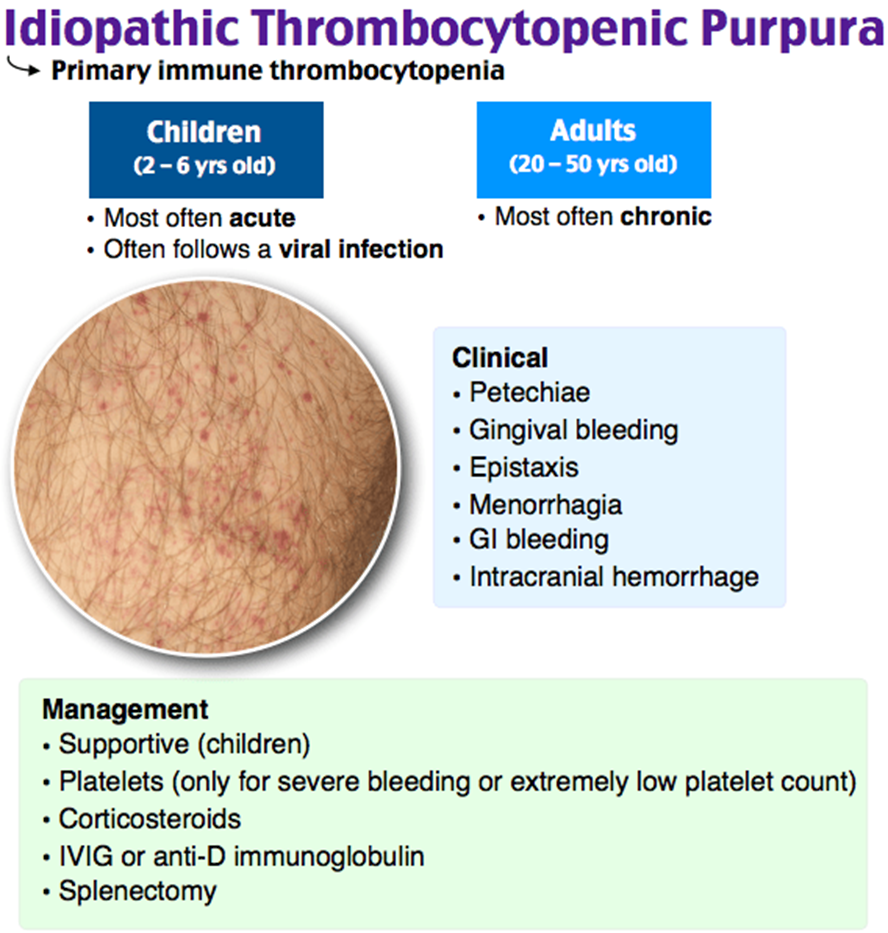A nurse is assessing a client who has COPD. The nurse should expect the client's chest to be which of the following shapes?
Barrel
Kyphotic
Funnel
Pigeon
The Correct Answer is A
A. Barrel shape: In COPD, the chest often assumes a barrel shape due to hyperinflation of the lungs. This is characterized by an increased anterior-posterior diameter, resulting in a more rounded appearance of the chest.
B. Kyphotic: A kyphotic shape refers to an exaggerated outward curvature of the thoracic spine. It is not a characteristic chest shape associated with COPD.
C. Funnel: A funnel chest (pectus excavatum) is a depression or hollowing of the chest wall, and it is not typically associated with COPD.
D. Pigeon: A pigeon chest (pectus carinatum) is a deformity in which the chest protrudes outward. It is not a characteristic chest shape associated with COPD.
Nursing Test Bank
Naxlex Comprehensive Predictor Exams
Related Questions
Correct Answer is B
Explanation
A. RBC (Red Blood Cells): ITP primarily affects platelet levels, not red blood cells. Therefore, red blood cell counts are not typically decreased in ITP.
B. Platelets: This is the correct answer. ITP is characterized by a low platelet count due to immune-mediated destruction of platelets. A decreased platelet count can lead to an increased risk of bleeding.
C. Granulocytes: While ITP primarily affects platelets, it does not have a direct impact on granulocyte counts. Granulocytes are a type of white blood cell.
D. WBC (White Blood Cells): ITP primarily affects platelets, not white blood cells. Therefore, white blood cell counts are not typically decreased in ITP.

Correct Answer is B
Explanation
A. "The medication can take up to 15 minutes to take effect." - This statement is not accurate, sublingual nitroglycerin works rapidly and often provides relief within a few minutes.
B. Sublingual nitroglycerin is administered by placing the tablet under the tongue, and it should be allowed to dissolve or be absorbed directly into the bloodstream through the mucous membranes. It is not swallowed or chewed. The small sip of water can help facilitate the dissolving process.
C. "Avoid taking the medication prior to exercising." - This statement is not accurate. Nitroglycerin can be taken before anticipated exertion or activities that may trigger angina to prevent anginal episodes during physical activity.
D. "Stop taking the medication and notify your provider if you develop a headache." - While headaches are a common side effect of nitroglycerin, they are generally transient and not a reason to stop taking the medication. Persistent or severe headaches should be reported to the healthcare provider.
Whether you are a student looking to ace your exams or a practicing nurse seeking to enhance your expertise , our nursing education contents will empower you with the confidence and competence to make a difference in the lives of patients and become a respected leader in the healthcare field.
Visit Naxlex, invest in your future and unlock endless possibilities with our unparalleled nursing education contents today
Report Wrong Answer on the Current Question
Do you disagree with the answer? If yes, what is your expected answer? Explain.
Kindly be descriptive with the issue you are facing.
